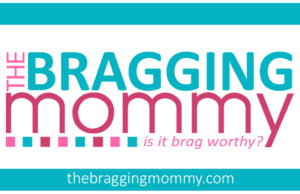Welcoming a newborn into the world is one of the most joyful and overwhelming experiences for any parent. Every coo, every stretch, every little movement feels like a miracle. But amid all the excitement and sleepless nights, there’s also a natural concern: Is everything okay with my baby? Are they growing, feeding, and moving the way they should?

Sometimes, things don’t go exactly as planned during birth. One such complication that may arise is Erb’s Palsy, a condition caused by damage to the nerves in a baby’s neck and shoulder area, often during a difficult delivery.
In a city like Chicago, where medical care is among the best but high-volume hospitals see a range of birth complications, being informed is especially important for new parents. Families here often seek guidance from professionals who understand both the medical and legal sides of these situations. That’s where Chicago Erb’s Palsy and Brachial Plexus injury lawyers can be a helpful resource for families looking for support.
What Is Erb’s Palsy?
Erb’s Palsy is a type of injury that affects a group of nerves called the brachial plexus. These nerves are located between the neck and shoulders and help control the muscles in the arms and hands. When these nerves are stretched or torn during birth, it can cause weakness or even paralysis in the baby’s arm.
This condition often happens when there’s trouble delivering the baby’s shoulder after the head has come out, especially in large babies or during long, difficult labors. The good news is that with early treatment, many babies do recover—either fully or partially.
Signs New Parents Should Watch For
Knowing what to look for is the first step. If you notice any of the symptoms below, it’s worth speaking to your pediatrician right away.
1. One Arm Isn’t Moving Like the Other
This is often the most obvious sign. If your baby is consistently keeping one arm still while moving the other freely, it may be a red flag. Babies usually move both arms when crying or reacting to sounds. If one arm seems limp or just hangs by their side, don’t brush it off.
2. Weak or No Grip on One Side
Check your baby’s grip. If one hand seems to hold your finger tightly, but the other doesn’t respond, it could be a sign of nerve damage. Grip strength tells a lot about how well the nerves are working.
3. Shoulder Is Lower or Turned Inward
Sometimes, babies with Erb’s Palsy will have an arm that looks a bit off. It might hang lower than the other, or the shoulder might seem turned in unnaturally. This is because certain muscles aren’t getting signals from the nerves.
4. No Startle Reflex on One Side
Newborns have a natural reflex where they throw their arms out when startled (called the Moro reflex). If only one arm reacts and the other stays still, it’s time to take a closer look.
5. Fussiness When the Arm Is Moved
If your baby cries or seems uncomfortable when you move one arm, it might be because of pain or weakness from a nerve injury. Don’t force movement—note the discomfort and discuss it with your doctor.
Why Early Detection Matters
Catching Erb’s Palsy early can lead to better outcomes. Physical therapy, range-of-motion exercises, and sometimes even surgery can improve function. The earlier you start, the better the chances your child will regain strength and coordination.
Delaying diagnosis and treatment may lead to long-term problems like muscle atrophy, joint stiffness, or permanent disability in that arm. That’s why it’s so important to pay close attention to these symptoms in the early months.
Final Thoughts
Every baby is different, and not every sign means there’s a serious issue. But when it comes to your child’s health and future, it’s always better to ask and act early. Erb’s Palsy might sound scary at first, but with proper care and support, many children recover and go on to live full, active lives.
Stay informed, stay alert, and don’t be afraid to ask questions. After all, you’re your baby’s biggest advocate—and that matters more than anything else.



